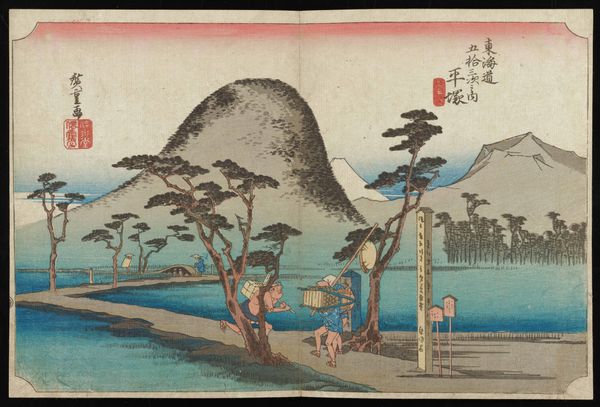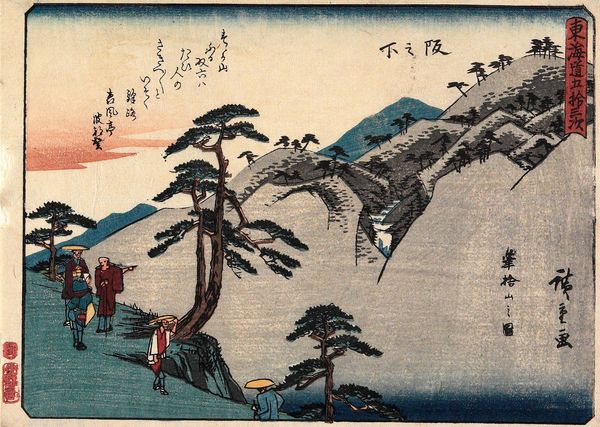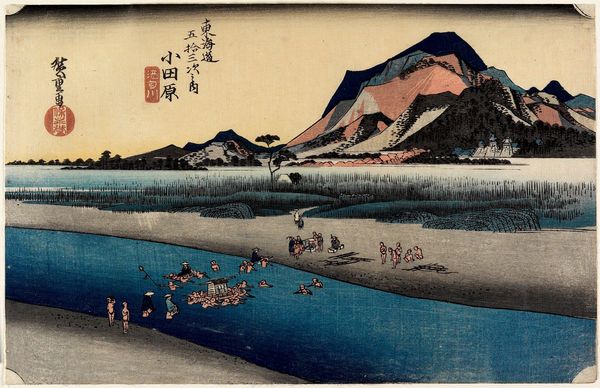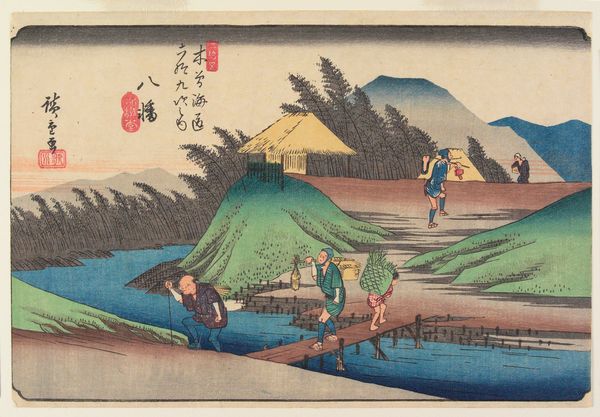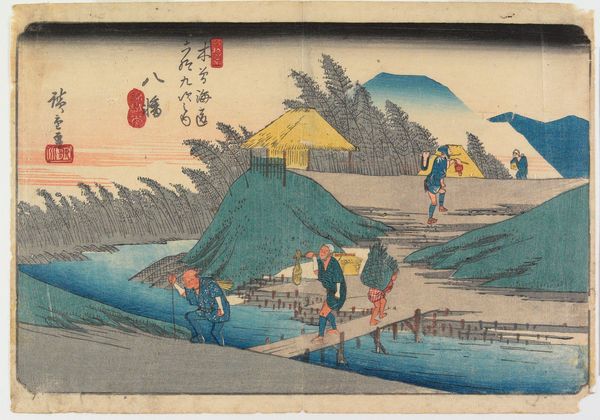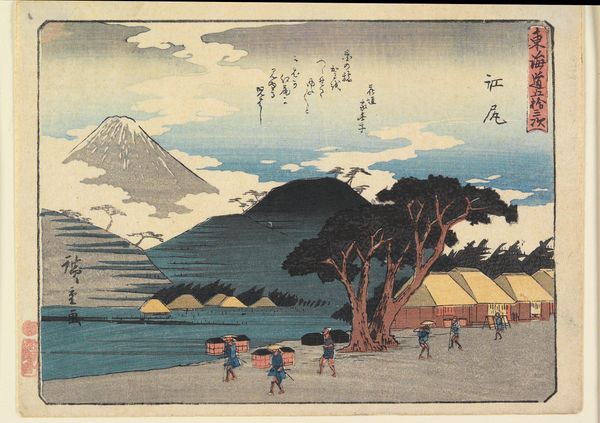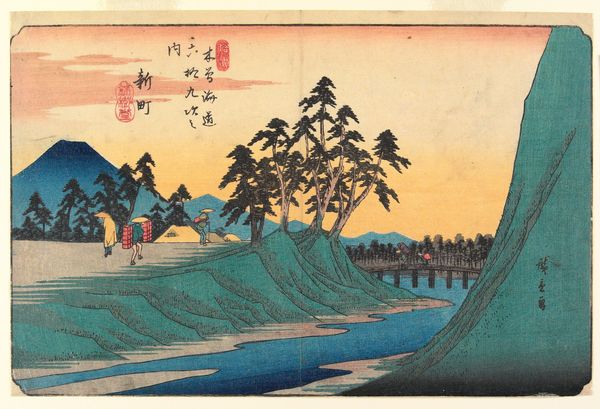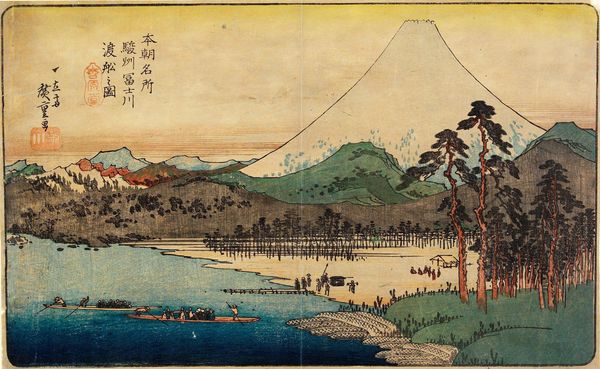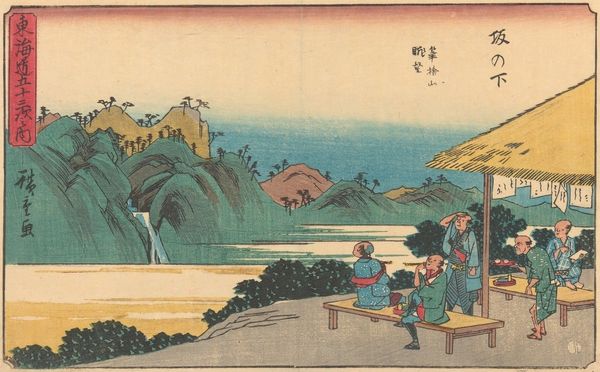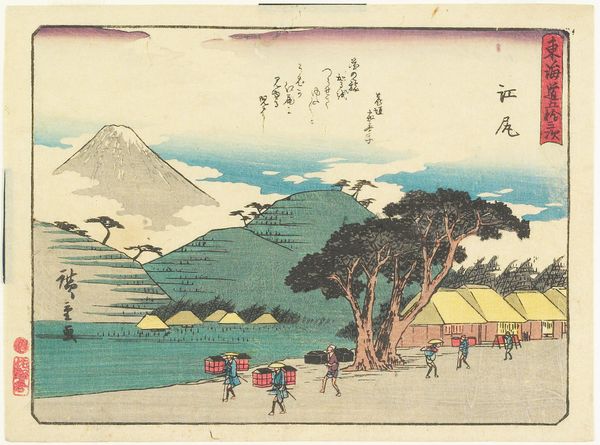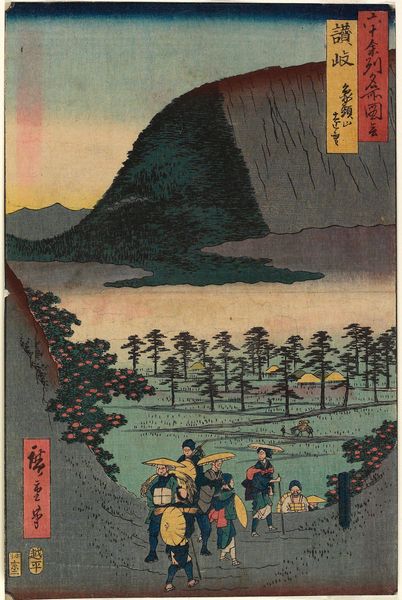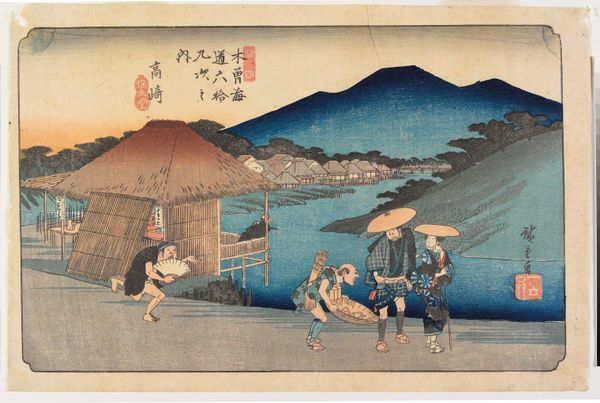
print, ink
#
water colours
# print
#
landscape
#
ukiyo-e
#
ink
Dimensions: 9 × 14 in. (22.9 × 35.5 cm) (image, sheet, horizontal ōban)
Copyright: Public Domain
Curator: I'm immediately struck by the cool blues and grays, a definite sense of journey implied in those figures hurrying along the road. There’s almost a hurried quality. Editor: This is Hiratsuka- Nawate Road by Utagawa Hiroshige, created sometime between 1832 and 1833. It’s currently held at the Minneapolis Institute of Art. We're looking at a woodblock print rendered in ink and watercolours, an example of Ukiyo-e art. Curator: Ukiyo-e, the “pictures of the floating world.” Makes me consider labor, class, the experience of movement across the landscape… how did gender, class, and perhaps even ability shape experiences of travel on this road? Editor: Precisely! Hiroshige uses the conventions of the period, yet manages to convey the lived experience of those on the road. For instance, those seemingly small figures aren’t merely staffage; they carry a weight. Both physical, what we can see on their backs, but also metaphorical. Note how he’s captured details in what they carry and the signage beside the road. Curator: And beyond its historical value, the visual language here fascinates me. The repetition of forms, the overlapping mountain peaks. Are those compositional choices meant to reflect a sense of being hemmed in, of the journey being cyclical? Editor: Could be. It reflects the principles that echo across different cultures when visualizing a landscape; in that context, consider the cultural significance invested in Mt. Fuji that peeks out. Also, trees are used for centuries to symbolize stability in visual artworks, do these framing trees symbolize that concept here? Curator: That’s fascinating when thinking about a figure that’s literally, actively destabilized. Even the colours used in this work is deeply rooted in artistic tradition. The cultural importance of that blue would demand consideration when evaluating this piece! Editor: Indeed. It demonstrates the value and emotional charge that pigments take, too, along the timeline. We learn a great deal from seeing that connection in this print. Curator: This is a lovely little rabbit hole! A picture that prompts such meaningful reflections on identity and symbols and art history. Editor: Yes, each time, there’s something new to discover. Thank you for helping contextualize this beautiful piece.
Comments
No comments
Be the first to comment and join the conversation on the ultimate creative platform.
